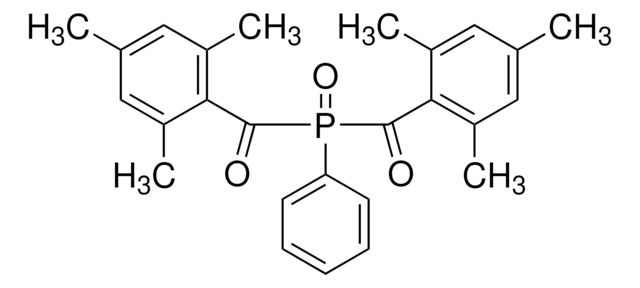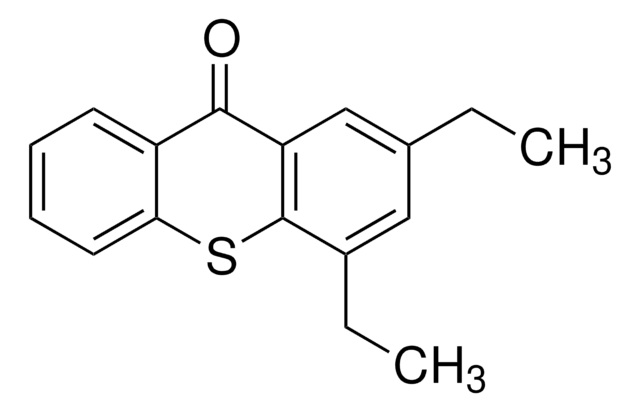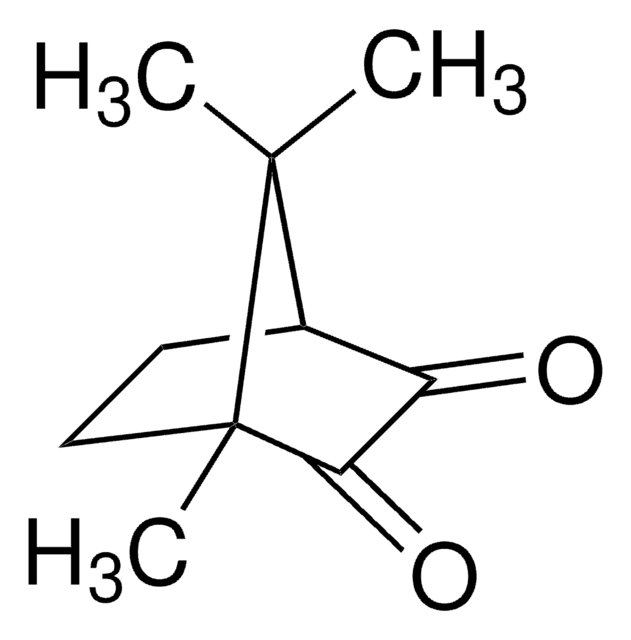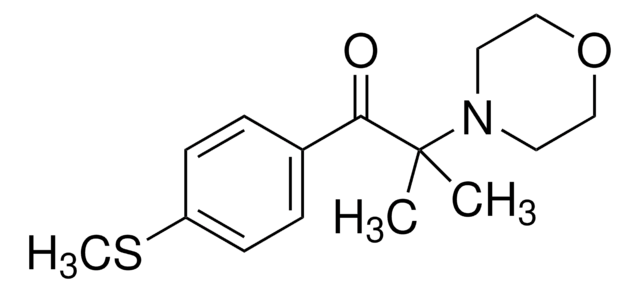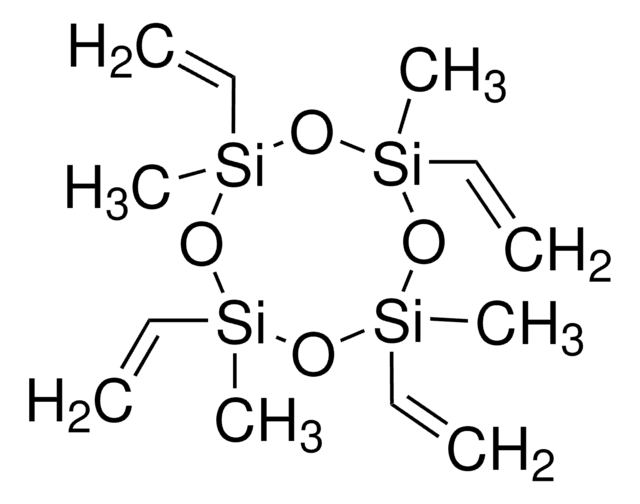415952
Diphenyl(2,4,6-trimethylbenzoyl)phosphinoxid
97%
Synonym(e):
(2,4,6-Trimethylbenzoyl)diphenylphosphinoxid, (Diphenylphosphoryl)(mesityl)methanon, 2,4,6-Trimethylbenzoylphenylphosphinat
About This Item
Empfohlene Produkte
Qualitätsniveau
Assay
97%
Form
powder
mp (Schmelzpunkt)
88-92 °C (lit.)
SMILES String
Cc1cc(C)c(c(C)c1)C(=O)P(=O)(c2ccccc2)c3ccccc3
InChI
1S/C22H21O2P/c1-16-14-17(2)21(18(3)15-16)22(23)25(24,19-10-6-4-7-11-19)20-12-8-5-9-13-20/h4-15H,1-3H3
InChIKey
VFHVQBAGLAREND-UHFFFAOYSA-N
Allgemeine Beschreibung
Anwendung
Lagerung und Haltbarkeit
Signalwort
Warning
H-Sätze
Gefahreneinstufungen
Aquatic Chronic 2 - Repr. 2 - Skin Sens. 1
Lagerklassenschlüssel
11 - Combustible Solids
WGK
WGK 2
Flammpunkt (°F)
Not applicable
Flammpunkt (°C)
Not applicable
Persönliche Schutzausrüstung
Eyeshields, Gloves, type N95 (US)
Hier finden Sie alle aktuellen Versionen:
Besitzen Sie dieses Produkt bereits?
In der Dokumentenbibliothek finden Sie die Dokumentation zu den Produkten, die Sie kürzlich erworben haben.
Kunden haben sich ebenfalls angesehen
Artikel
The manufacture of monomers for use in ophthalmic applications is driven by the need for higher purity, improved reliability of manufacturing supply, but ultimately by the need for the increased comfort, convenience, and safety of contact lens wearers. Daily wear contact lenses have the potential to fill this need for many customers; however, their widespread use is constrained by higher costs compared to weekly- or monthly-based lenses. New approaches that improve cost structure and result in higher quality raw materials are needed to help make contact lenses more affordable and accelerate growth of the contact lens market.
Unser Team von Wissenschaftlern verfügt über Erfahrung in allen Forschungsbereichen einschließlich Life Science, Materialwissenschaften, chemischer Synthese, Chromatographie, Analytik und vielen mehr..
Setzen Sie sich mit dem technischen Dienst in Verbindung.